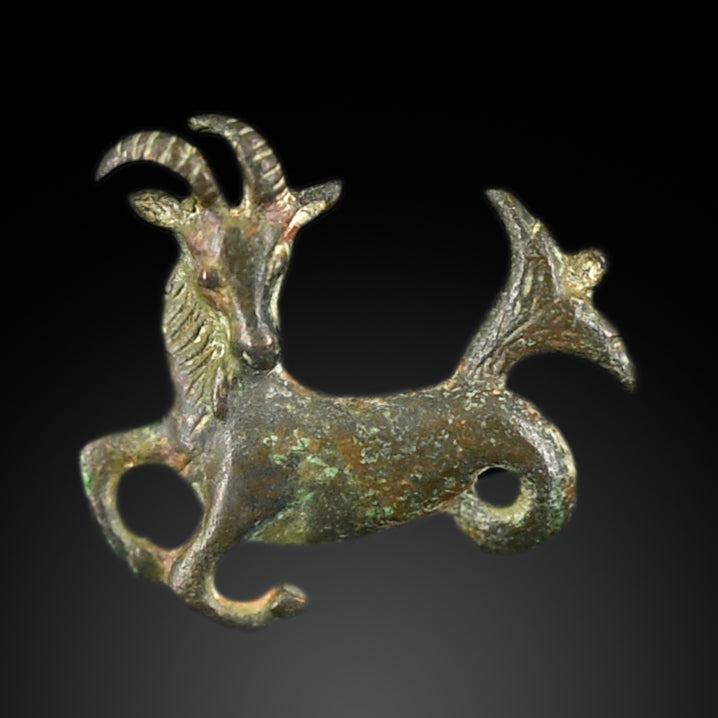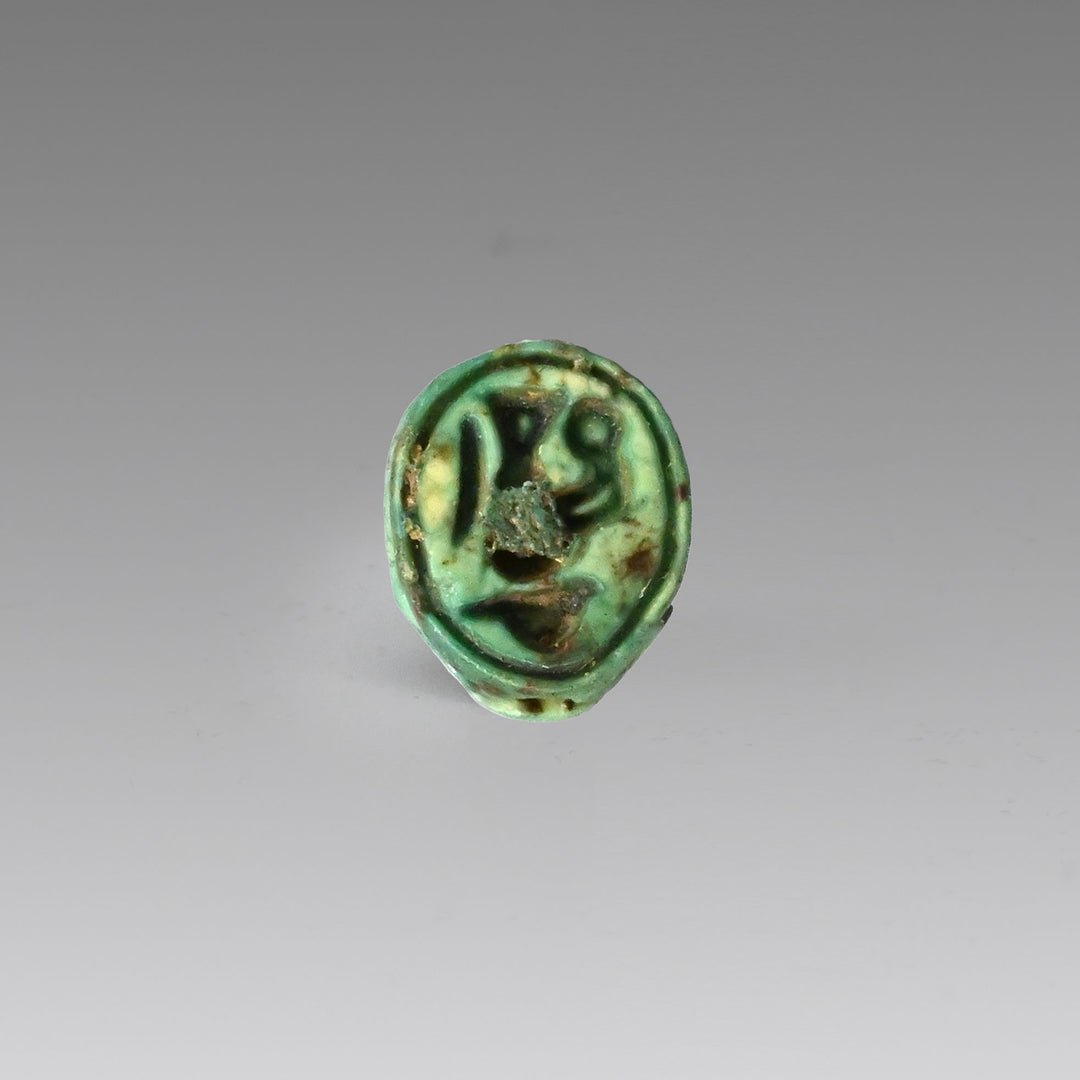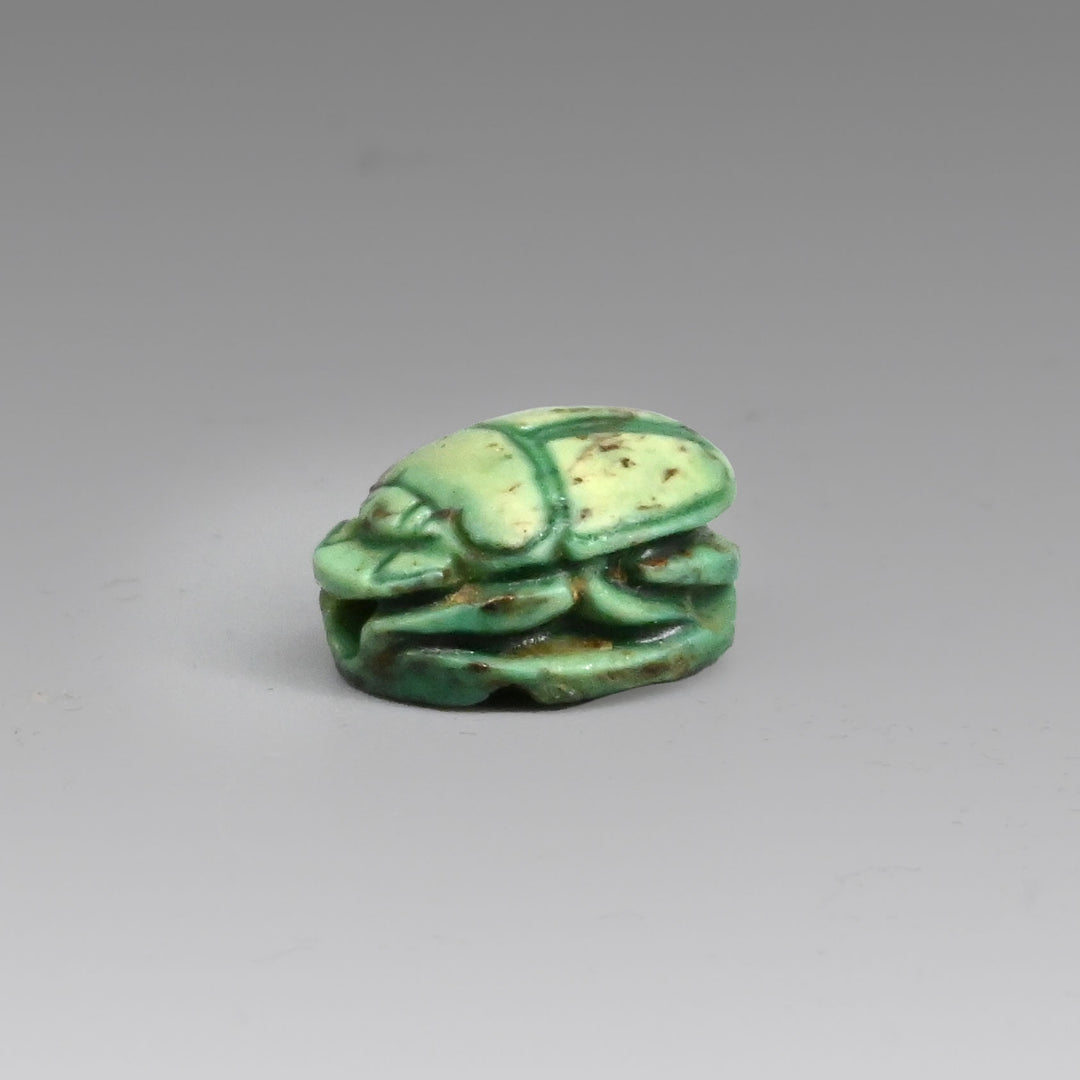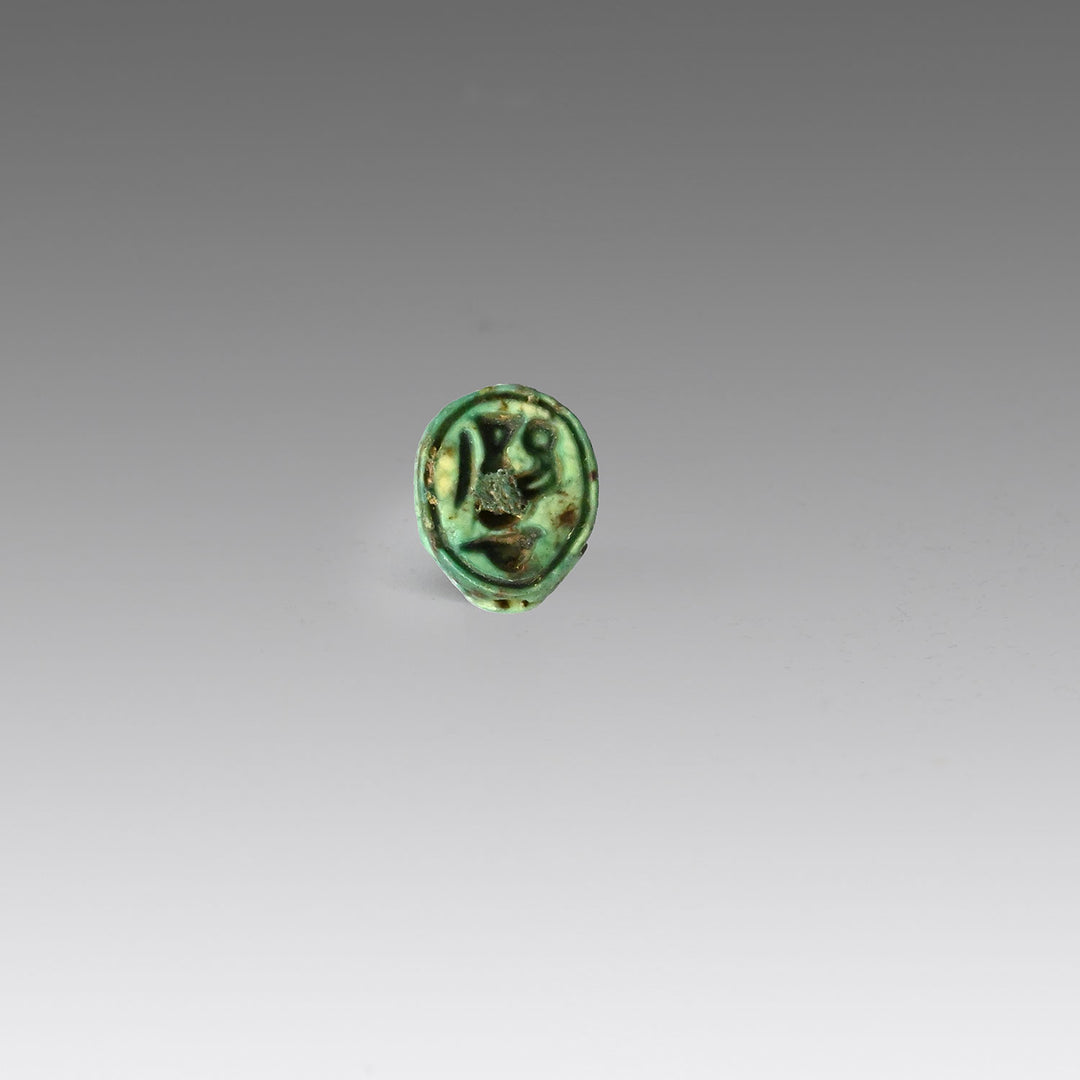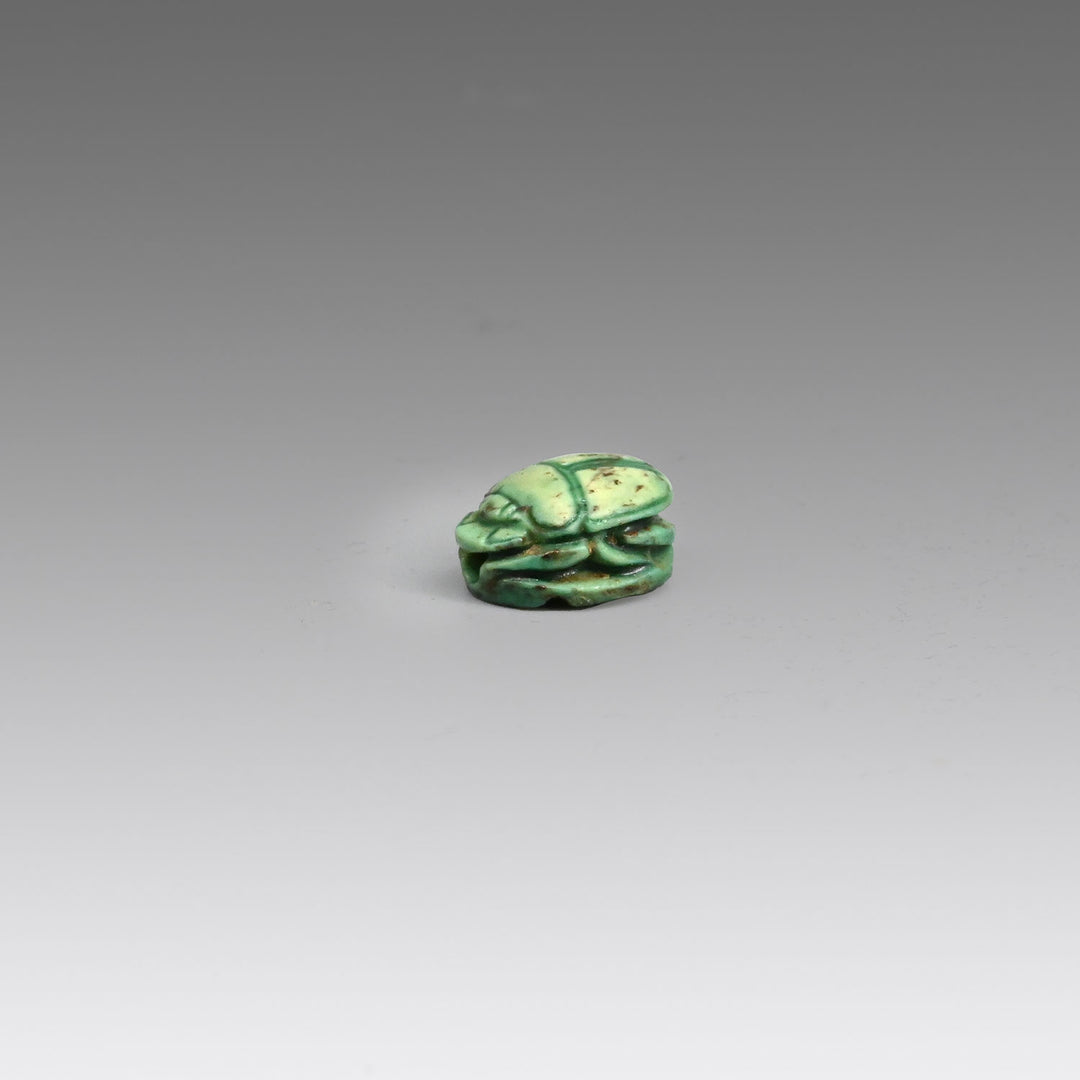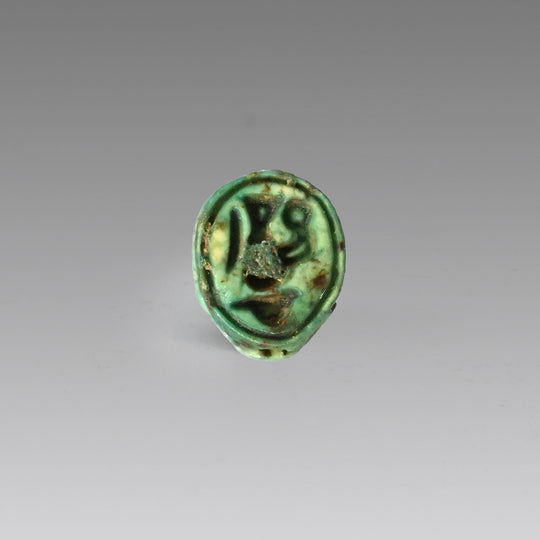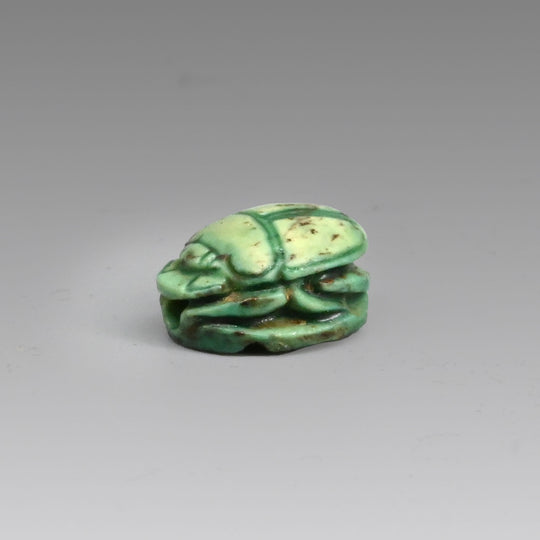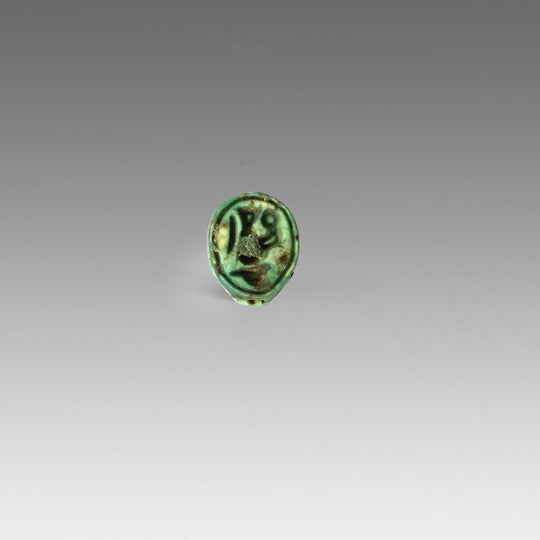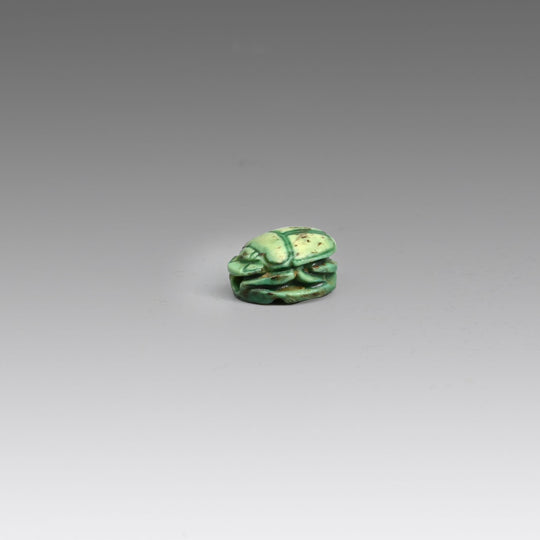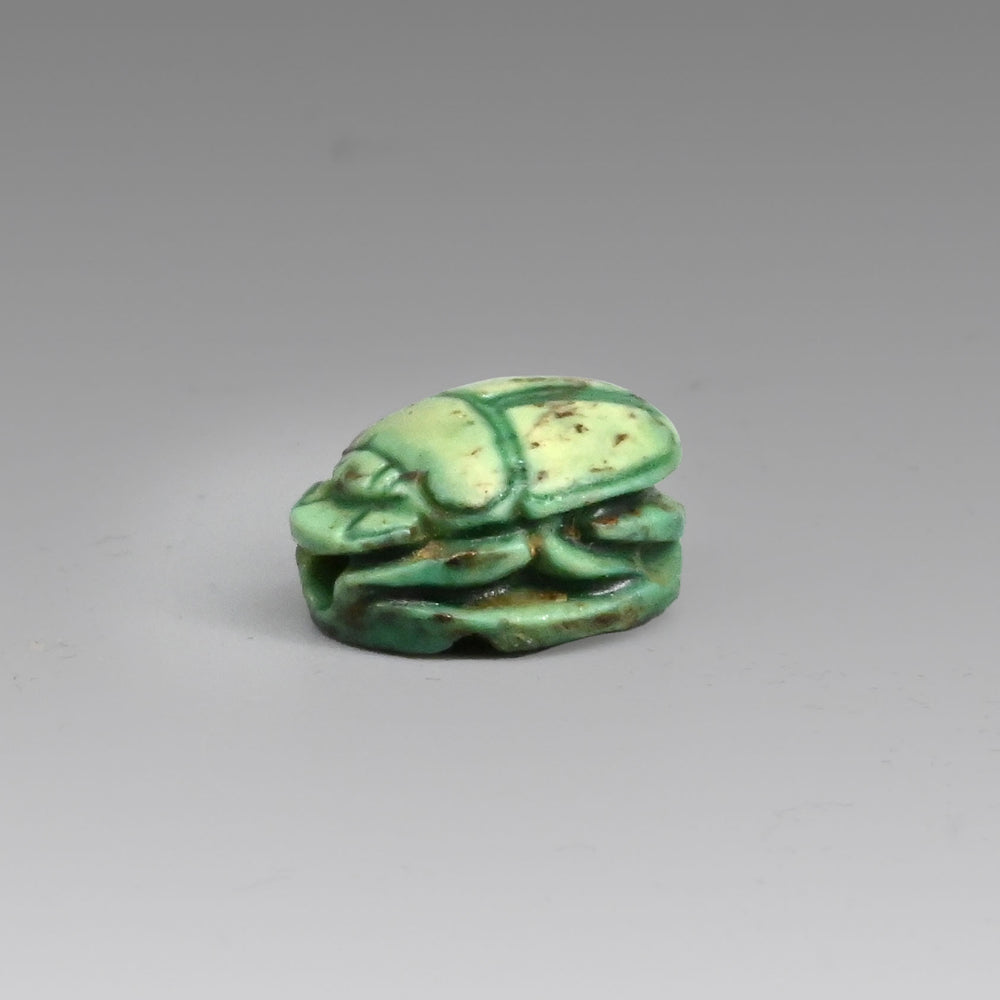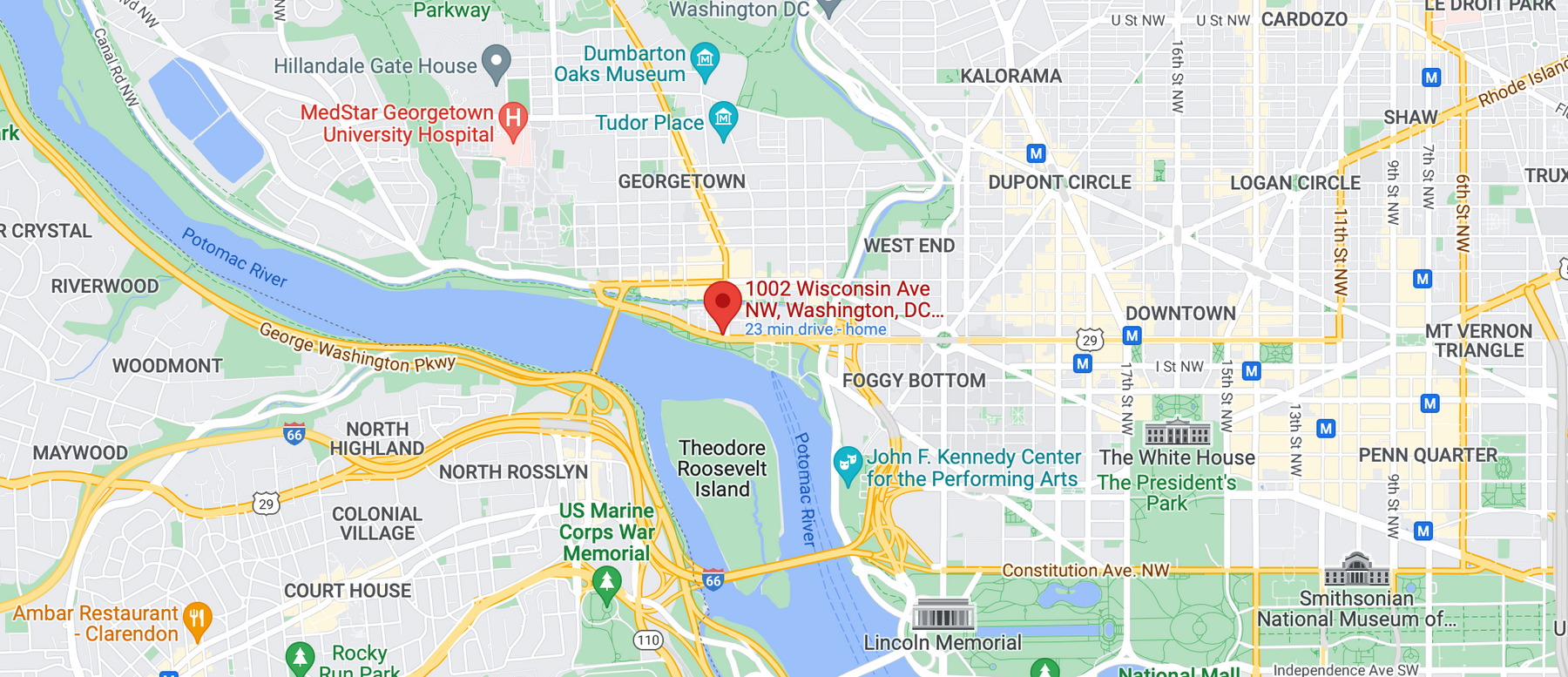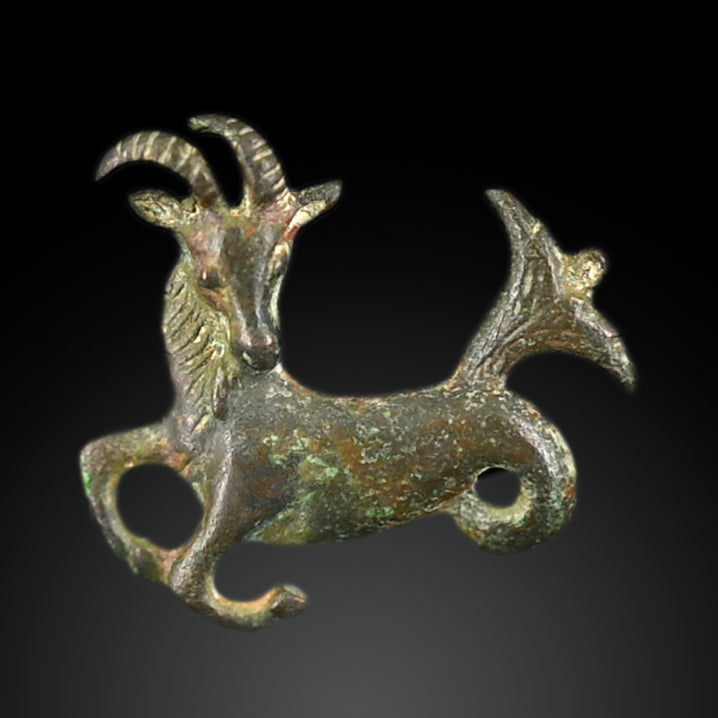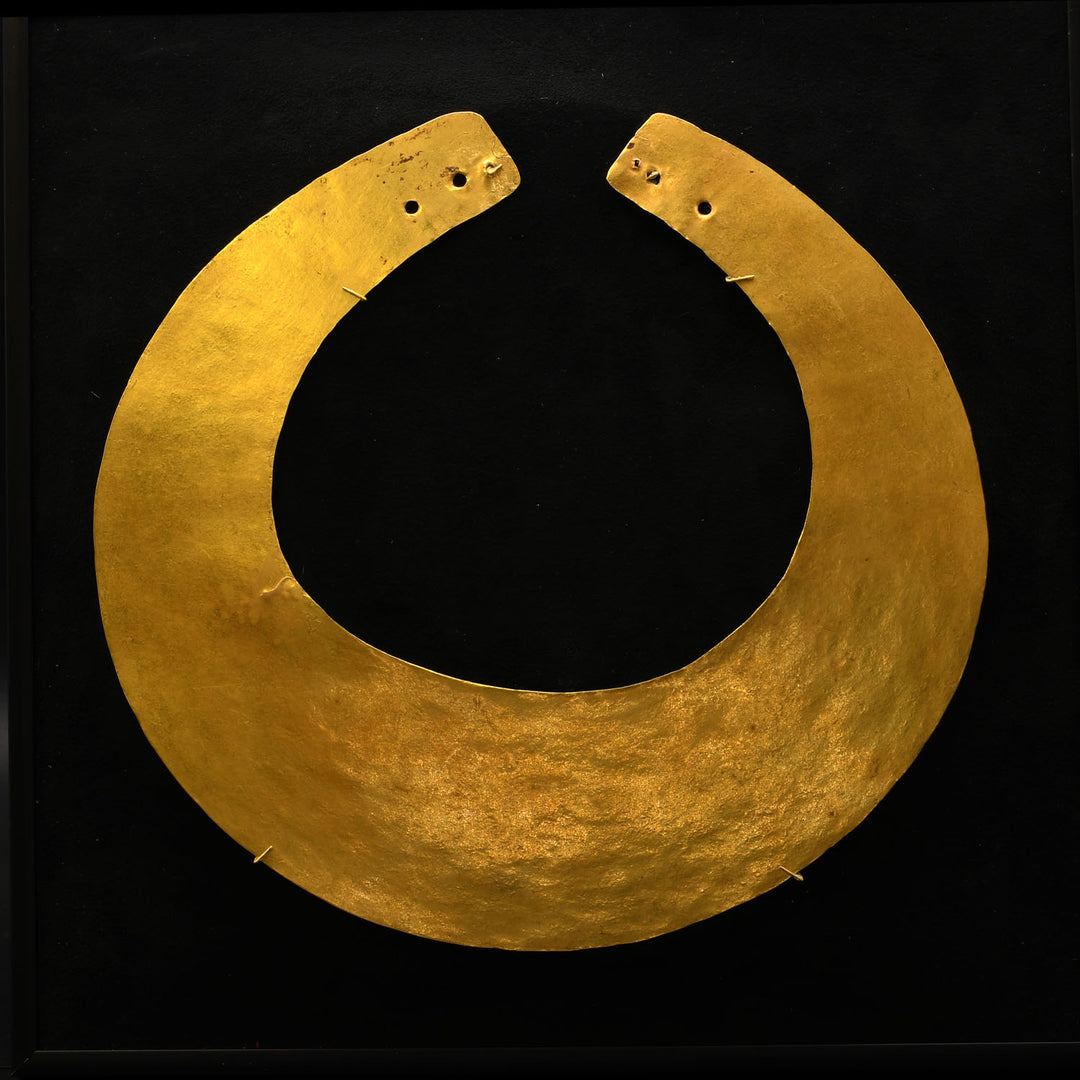A Royal Egyptian Glazed Steatite Scarab for Amasis II, Dynasty 26, ca. 570 – 526 BCE
EA2310
- This object qualifies for free USA shipping and a flat rate fee of $60 if shipping internationally.
Pierced longitudinally for suspension, the scarab is finely carved from steatite then glazed and fired to a soft green, the back has a single suture and pronotum lines with markings on the elytra. The legs are naturalistically carved and deeply incised. The base is inscribed “Khnemibre,” the prenomen of Amasis (Ahmose) II of Dynasty 26, whose reign marks the high point of the 26th Dynasty in terms of wealth and prosperity.
The last great ruler of Egypt before the Persian conquest, Amasis II (Ahmose) brought Egypt closer to Greece. Under his prudent administration, Egypt's agricultural-based economy reached its zenith. Amasis adorned the temples of Lower Egypt, especially with splendid monolithic shrines and other monuments. He assigned the Greeks the commercial colony of Naucratis on the Canopic branch of the Nile. When the temple of Delphi was burnt, he contributed 1,000 talents to the rebuilding. He also married a Greek princess named Ladice, daughter of King Battus III and made alliances with Polycrates of Samos and Croesus of Lydia. Montaigne cites the story by Herodotus that Ladice cured Amasis of his impotence by praying to Venus/Aphropdite. Under Amasis, Herodotus writes:
It is said that it was during the reign of Ahmose II (Amasis) that Egypt attained its highest level of prosperity both in respect of what the river gave the land and in respect of what the land yielded to men and that the number of inhabited cities at that time reached in total 20,000. (Herodotus, (II, 177, 1)
Condition: Some wear to the base, but otherwise intact and in excellent condition overall.
Dimensions: Length: 1.1 cm (0.43 inches)
Provenance: Private Massachusetts collection, acquired from the London trade in the late 1980s - early 1990s.
Sands of Time provides a lifetime, unconditional guarantee of authenticity and provenance. Every object you purchase from us is accompanied by a Certificate of Authenticity, stating culture, provenance, and age.
Furthermore, we conduct due diligence to ensure the item, to the best of our knowledge, has not been illegally obtained from an excavation, architectural monument, public institution, or private property. Wherever possible, reference is made to existing collections or publications.Wherever possible, reference is made to existing collections or publications.
We ship Tuesday to Friday with FedEx and usually same day if your order is received before 2pm. Within the continental USA, packing, shipping and insurance is free. Depending on size and destination, delivery times range from one to five business days.
For overseas shipments we charge a small flat rate which includes packing, preparation of all customs paperwork, insurance and carrier fees in compliance with all USA and International customs requirements. Overseas shipments are sent using either USPS Priority Mail or FedEx but contact us if you have a shipping preference. International customers are responsible for all duties and taxes.


